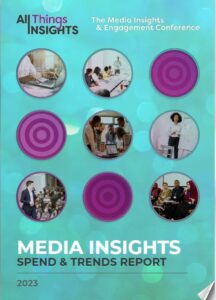In “Establishing Insights ROI,” Seth Adler discusses the subject with Shilpa Khanna, Associate Director, Transformational Growth Insights, Clorox. Sure, insights must be actionable. And yes, insights must be actioned. And of course, insights must have an impact. But in order to understand insights impact, the insights function must establish measurable means to realize the impact of insights on the organization. We discuss establishing such means and what needs to be done at your organization now to find further measurable success.
For some, insights ROI was thought to not be possible. However, now there are more ways to look at it and gauge it, advises Khanna. One must consider the entire life of the insight.
“During the research stage, ask yourself, how long is the insight going to live?” says Khanna. Some insights are meant to be near term or short lived but some can be extended and become more long term. As Khanna puts it, one can extend the longitude of the insights lifecycle. From there, look at how the insight can be extended. This can take an insights’ lifecycle from six months to three years, for example.
Different consumer preferences, for example, can also potentially take insights beyond the short term. This will result in better ROI for the business. “Find a way to extend the insight,” says Khanna.
Benchmarks are a second way to create more return on investment. “It gives me the confidence that I’m getting back what I need,” she says.
The riskier the decision, the higher your confidence level in the data must be, advises Khanna. If you invest in higher confidence-related research, you can demonstrate to executives that they should also have that higher confidence in the insights. “With the ability to benchmark, the more investment and the higher the risk, the better ROI,” she says.
Khanna also advises to be more preemptive before and after projects. “Have the confidence level to ask and answer questions, and ask if the insights meet certain criteria. Did I achieve success? How could it have been better? Help to build and make the process better,” says Khanna. If expectations and ROI is met, it can help fill the gaps.
“There is no perfect or precise way for ROI,” says Khanna. “You don’t measure but set expectations. This is what I want to get out of this research.” You can also use a behavioral model, assessing is the research worth it and assessing what the end product is.
Setting benchmarks is also key when it comes to setting budgets as part of the process. You have to be conscious how you are getting your return.
“It’s not just did I succeed, is the research worth it? Ask, what is this to my business? It will set up your success and budget needs, by training yourself that way. Is it worth the value of what the business is investing in it? Make sure you can stretch your dollar,” she says.
Ultimately, insights ROI is an art, and not a complete science. You have to find the right fit and find yourself in the right spot.
“Ask the tough, smart questions. What are the must haves, nice to haves, and priorities? Be creative and pack in as much as you can. Try to use multiple stones in one throw, and get ten birds with one throw,” advises Khanna. “Be an effective project manager.”
Contributor
-

Matthew Kramer is the Digital Editor for All Things Insights & All Things Innovation. He has over 20 years of experience working in publishing and media companies, on a variety of business-to-business publications, websites and trade shows.
View all posts















































































